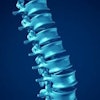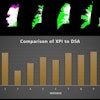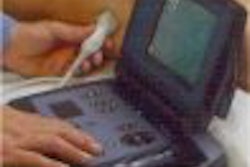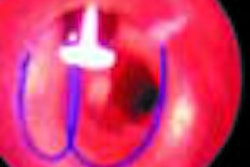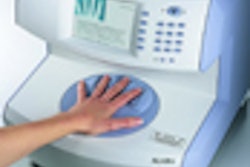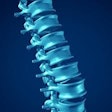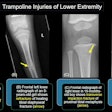Radiologic technology is providing a California man a more rewarding career than his first as an executive with an international aluminum company.
"I worked in the business world for 30 years," said Howard March, R.T. (R). "I made a comfortable salary and saved the company a lot of money, but I did not really feel like I accomplished anything."
Now every day offers satisfaction, March said. He now works at the Breast Care Center in Orange, CA, as the bone densitometry technologist. "I counsel women about osteoporosis. Most of the women I work with are breast cancer survivors. We do the bone scan after their chemotherapy, and then under the direction of physician I share the results with them. I enjoy my job tremendously," he said.
A bone densitometry technologist uses a special type of x-ray equipment to calculate total body bone mineral content or to measure bone mineral density at a specific anatomical site, usually the wrist, heel, spine, or hip. Physicians use the results of this exam to estimate the amount of bone loss, to track the rate of bone loss over a specific period of time, and to estimate the risk of fracture.
March found his new career on the patient side of the gurney during an angioplasty. "You are awake during the angiogram," he said. "When I saw those images of my arteries pounding, I knew that medical imaging was something I wanted to do."
A few years later, his company decided to downsize its operations in Southern California. But relocating was not an option for March or his family. "I had been with the company for 30 years, and I could have retired. I was in my early 50s, so I did not mind retiring because I had enough of my management career. But I needed to find something else to do."
Wise investing allowed March more freedom to choose what he would do next. "I could do anything I wanted. I had always wanted to get into the medical field, and I kept thinking about those angiograms," he said.
Cypress College in Cypress, CA, offered an 18-month program in radiologic technology. March had a bachelor’s degree in business management, so he had the same academic requirements as some of the younger students. His maturity was an asset. "Age was never a problem. Although I was 51 and 52 in junior college, I was not the oldest one there."
From the beginning, he enjoyed the program and enjoyed his clinical internship. But he also began to understand that he did not want to work in a hospital, because he wanted a fixed schedule and fewer hours.
So he looked for another kind of experience, he found a job with a pharmaceutical research company that was sponsoring a study in 35 states and needed bone densitometrists.
Again his maturity was an asset. It allowed him to work for the company for the full 18 months of the study, eventually traveling to several of the states involved in the study.
"I was one of the more mature people they hired. I knew about business traveling and had management experience," March said.
After the study ended, March was in a dilemma again. He wanted to find a rewarding position and still remain somewhat retired. He found his current position in the classified ads.
He said John West, M.D., who heads the clinic, and oncologists Paul Coluzzi, M.D., and David Margileth, M.D., have a very compassionate philosophy about their patients.
"They want the patients to be fully informed and have as many test results as possible before they go home," March said.
The physicians are also fair with him. March negotiated benefits, with his part-time schedule of 30 hours a week.
"I really felt like I had what they needed," he said. "I have a lot of autonomy. That is important to me. Under the direction of Dr. Coluzzi, I conduct the tests and report the results and counsel the patient. I run my own little department."
By American Society of Radiologic TechnologistsJune 2001
